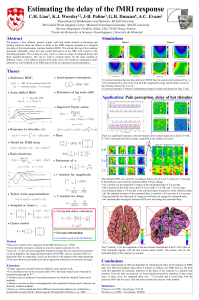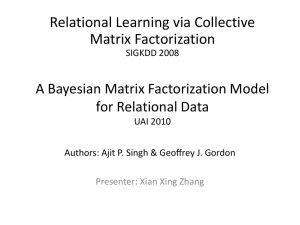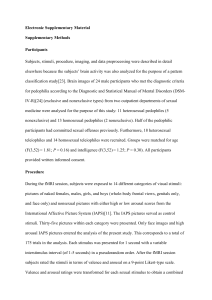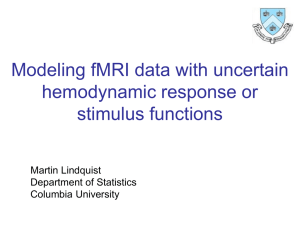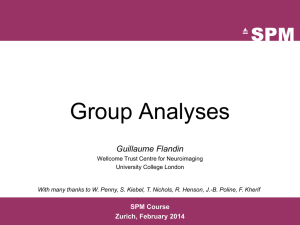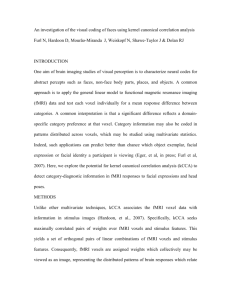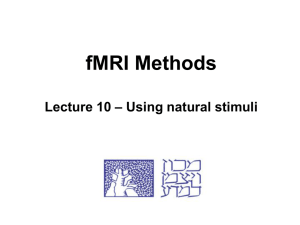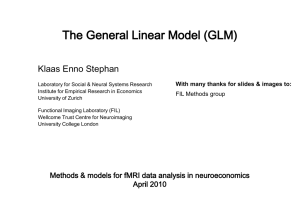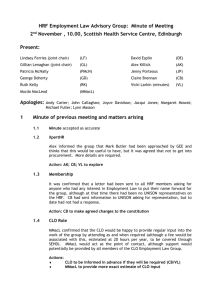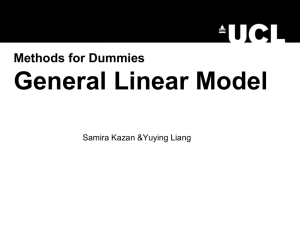Nonparametric Inference of Hemodynamic Response for
advertisement
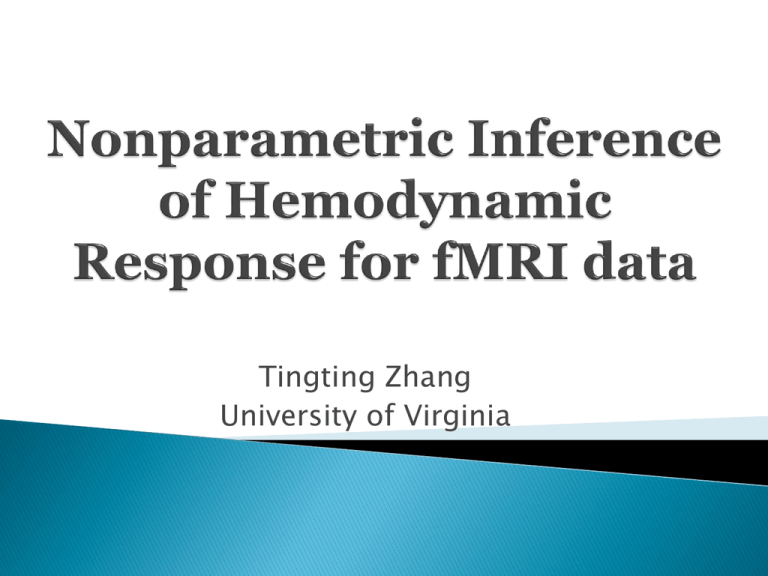
Tingting Zhang University of Virginia Joint work with Fan Li Data from Duke Department of Psychology Lab of Ahmad Hariri Data fMRI data under a specific experimental design Neuroticism-Extroversion-Openness (NEO) Inventory measurements: regarding individual personality, for example, Anxiety, Extraversion, Conscientiousness Goal of the experiment Explore the differences of brain activities across subjects to emotional stimuli Understand the relationship between individual brain functions and their temperament and personality Participants completed a standardized protocol comprised of four blocks of a facial expression matching task interleaved with five blocks of a shape-matching control task. Three stimuli: Fearful face matching, Angry face matching and neutral shape matching Block Design For every TR of 2s, a 3d brain image of dimension is acquired The total experiment time is 390 s, so there are195 times points for each voxel Nonlinear ones such as the Balloon model (Buxon et al., 1998; Friston et al., 2000; Riera et al., 2004) in which differential equations are constructed to describe the brain hemodynamics Linear Models: General Linear Model (GLM) (Friston et al., 1995a; Worsley and Friston, 1995; Goutte et al., 2000) in which fMRI time series are assumed to follow a linear regression of stimulus effects. Let ,I i=1,…N and t=1,…,T be one fMRI time series for subject i Let v(t) be the stimulus function, v(t)=1, if the stimulus is evoked at time t, otherwise it equals zero. GLM: where m is some known constant, and is the hemodynamic response function of ith subject describing the underlying evoked brain activity due to the stimulus Extract important quantitative characteristics of individual HRF estimate to be regressed with individual NEO scores With K different stimuli, the fMRI is modeled as Here, we would be interested in estimating Parametric approaches usually assume parametric forms of HRF with only one free parameter measuring the amplitude (Worsley and Friston, 1995) Linear Fit: only magnitude is the free parameter Nonlinear Fit, using Gauss-Newton algorithm to estimate six free parameters by minimizing MSE Inverse Logit Regression Model (Lindquist & Wager 2007) The most flexible approach is to treat HRF at every time point as a free parameter (Glover, 1999; Goutte et al., 2000; Ollinger et al., 2001) can be rewritten as Usually, the least square estimate has an unnatural high-frequency noise The smoothing parameters vary for different HRFs. For easy computations, we consider do kernel smoothing on the least square estimate: use Nadaraya-Watson estimator For each stimulus k, we choose the optimal h that minimizes We and . Then the kernel estimate is linear of the least square estimate: Because for least square estimate, we have Then The variance can be estimated by plugging the OLS estimate of In many situations, the matrix is ill-conditioned. Even though is not ill-conditioned, due to the many parameters to be estimated, and the large variance involved, the kernel smoothing is not sufficient to reduce the estimation error. We consider add Tikhonov regularization We select the parameters that minimize The bias and variance of the estimate can be easily estimated With large , a large bias is incurred, so bias correction is necessary. Because The new estimator is defined as 10 15 Theoretically Optimal Lambda 0 10 5 Frequency 20 30 Theoretically Optimal Bandwidth 0 Frequency 40 Histogram of SelectLamda2 0 1 2 3 4 SelectLamda2 5 6 7 2 4 6 h 8 10 Due to the large individual variance, all the existing nonparametric methods are only feasible for magnitude estimation. Represent Connecting HRF and other subject covariates with response variables Interpretation
